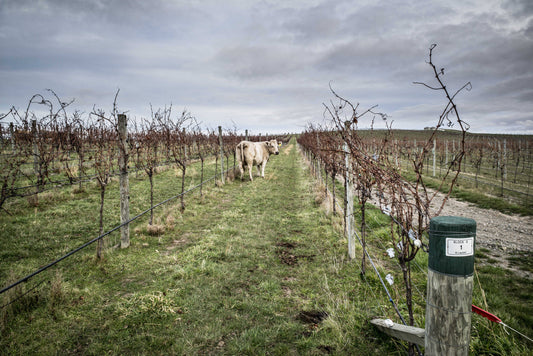| Pretty much every New World wine-producing country I can think of has a hero grape. I don’t mean that South African Chenin Blanc goes about in a Batman mask or that Argentine Malbec can leap tall buildings with a single bound. What I’m talking about is that each country has a grape with which it is strongly identified – the kind of thing that marketing folk like to refer to as a USP.
Shiraz has become Australia’s de facto hero. It is, after all, the country’s most widely planted grape. But things could easily have been different. You see, Aussie Shiraz has a misunderstood sibling: Grenache. Both grapes originally journeyed down under in the 1830s, imported by James Busby, the man widely considered to be the father of the Australian wine industry.
Although Busby planted his clippings in what became Sydney’s Botanic Gardens, just round the back of the Opera House, both grapes soon made their way to South Australia, a region whose climate was far more congenial for grapes from the Mediterranean basin. There they thrived, creating the basis for Australia’s fortified wines – a style that dominated the market until midway through the 20th century.
When dry table wines became the norm, though, Grenache took a backseat to Shiraz in terms of popularity. It’s not hard to understand why. Shiraz – even very ripe Shiraz – is a charming, friendly grape, with supple tannins, rich fruit and a plush mouthfeel. Grenache, on the other hand, was a true-blue ‘ocker’ Aussie – chunky and often rather coarse, with alcohol levels that easily soared into the 16% abv ballpark and sugary, rather jammy fruit that reminded me of boiled raspberry sweeties.
I wasn’t the only one who was disenchanted with big, ripe wines. Driven in part by the rising demand for lighter, fresher dishes based on Asian or Mediterranean ingredients rather than the hefty roasts of yesteryear wine lovers in Australia and around the world started looking for brighter, zestier wines that could complement these flavours. Big, burly Grenache began to look as old fashioned as your grandad’s M&S cardie.
For the past decade, though, Grenache has been making a quiet comeback. One factor is the growing appreciation of Australia’s old vine material (South Australia has some of the world’s oldest plantings of Shiraz and Grenache vines in the world). At the same time grape growers and academics have been working towards an increasingly detailed understanding of Australia’s terroir. In 2010 a map of McLaren Vale’s geology was published (the most detailed soil analysis conducted in Australia to date). Those who believed that the New World lacked ‘terroir’ or complexity were silenced by the revelation that the region’s 7,324 hectares of vineyards are planted on some 40 distinct geological profiles, with soils varying in age from 550 million years old to around 15,000 years.
Winemakers realized that they could use the interplay between this complexity of terroir, the superb old vine material and their growing willingness to experiment with winemaking to create a different style of Grenache.
‘In the past Grenache was picked late, and the wines lacked vitality and purity – they were almost like port,’ says Giles Cooke MW, who makes wines in Australia under the Thistledown label (as well as working as the wine development director for the UK’s Alliance Wines). ‘Now we’re making a different style by picking a little earlier, using much less oak and making the wines with much less of that oxidative character. As a result, this is Grenache that’s much lighter on its feet. It’s floral and elegant, with a lovely balance.’
So taken with this refined new take on Grenache are most Aussie critics and winemakers that some have taken to referring to the grape as ‘blue collar Pinot’. Maybe all it needs now is a telephone kiosk and a red cape for it to be transformed into Australia’s latest, greatest viticultural superhero. | 


